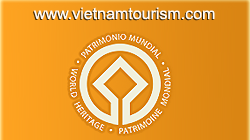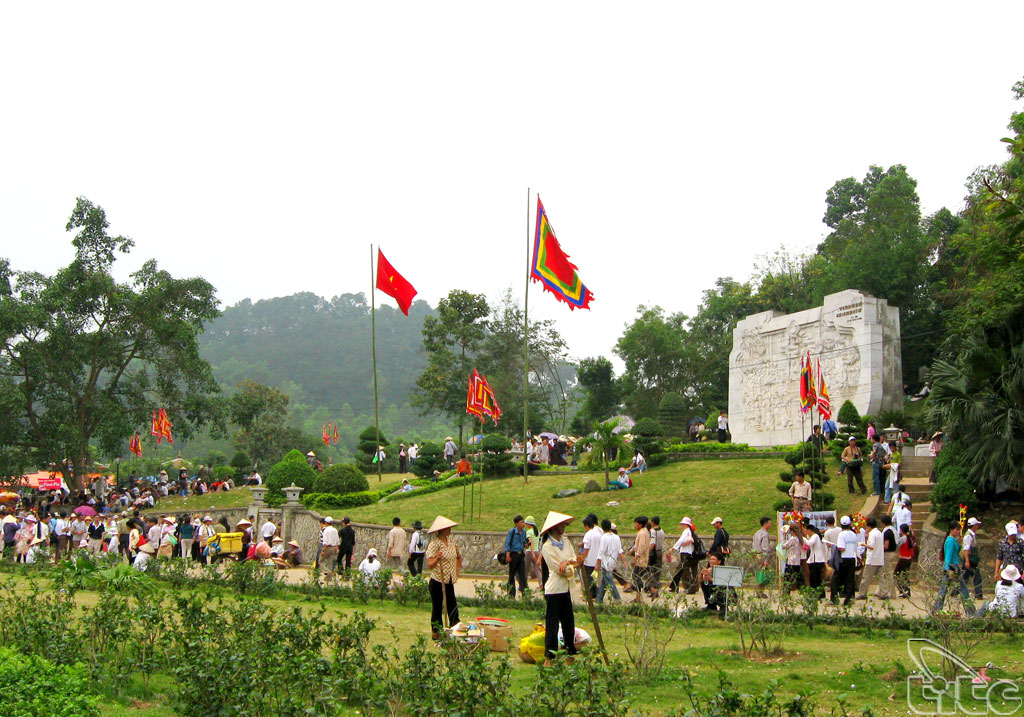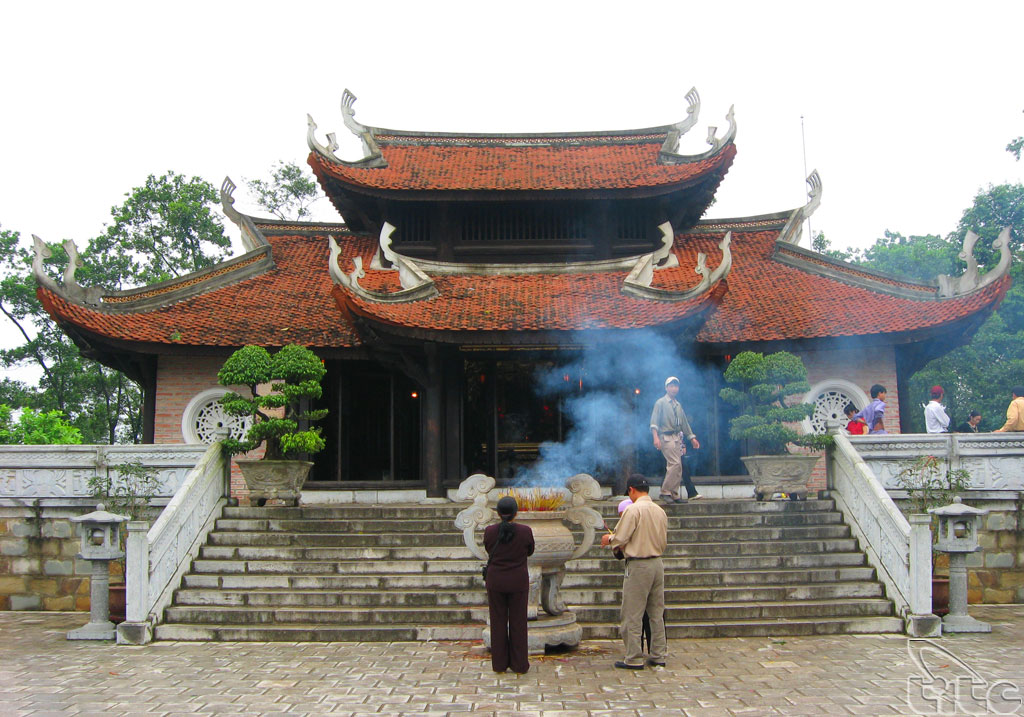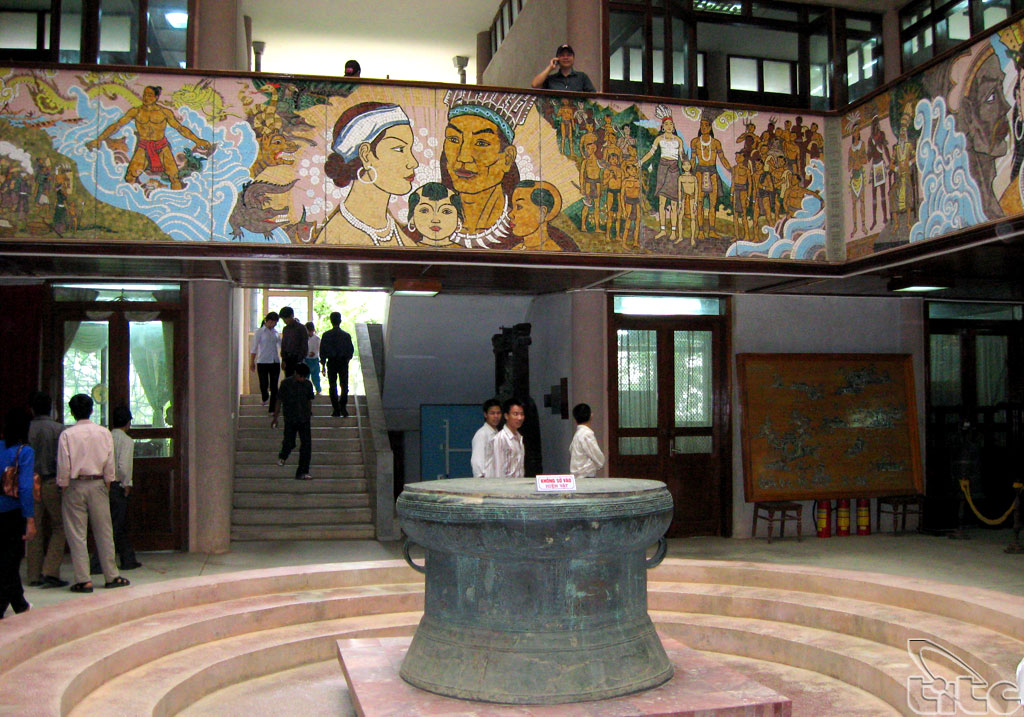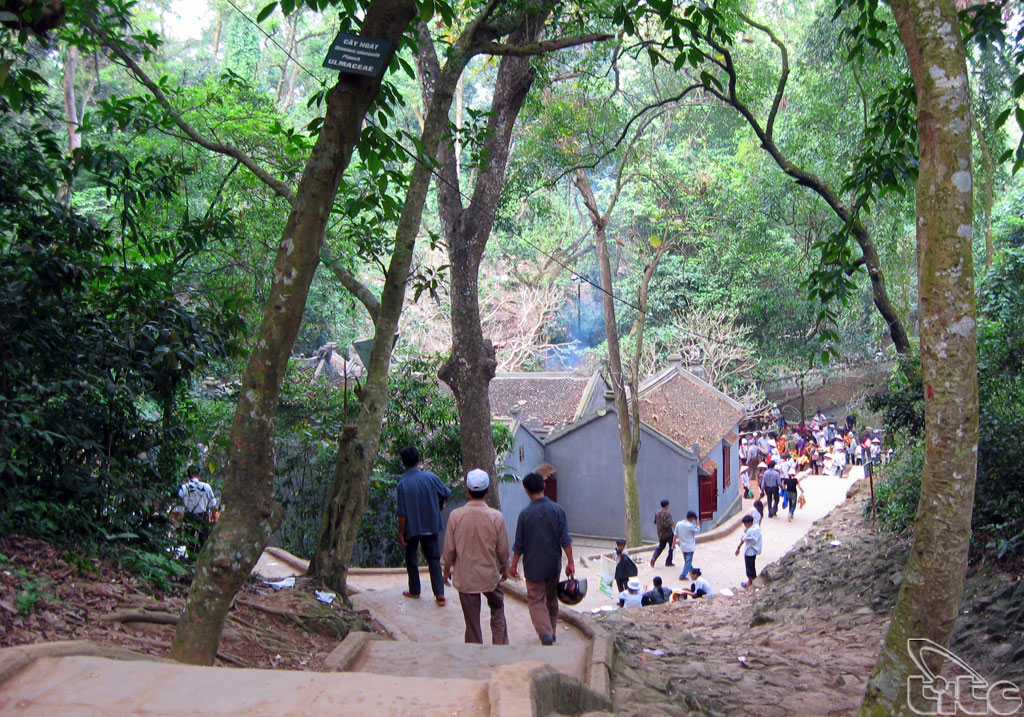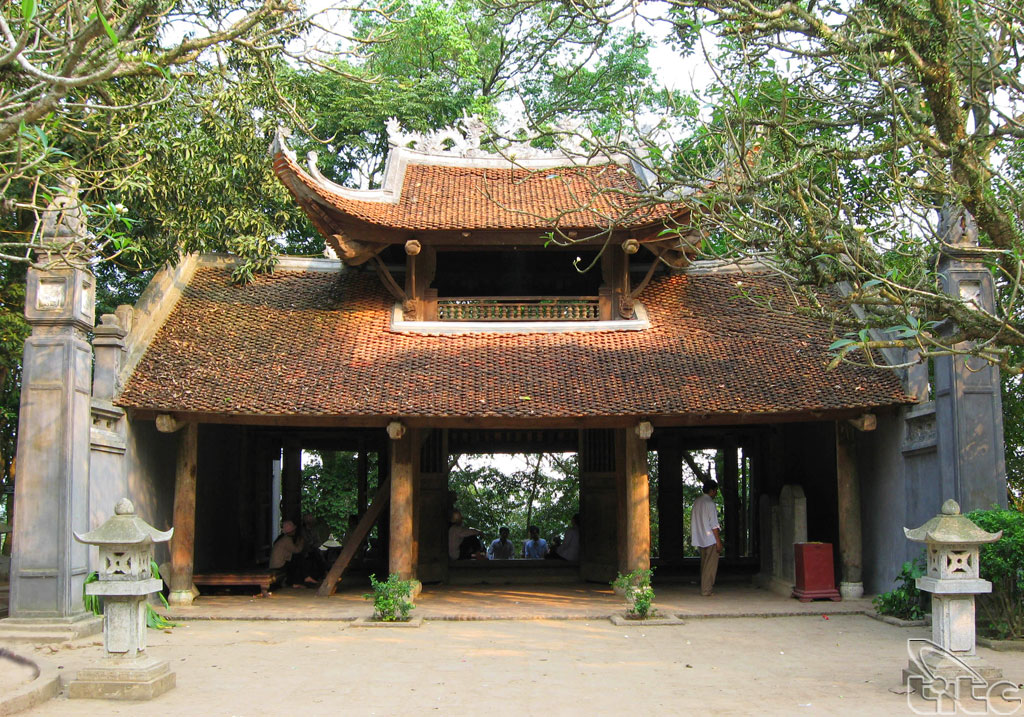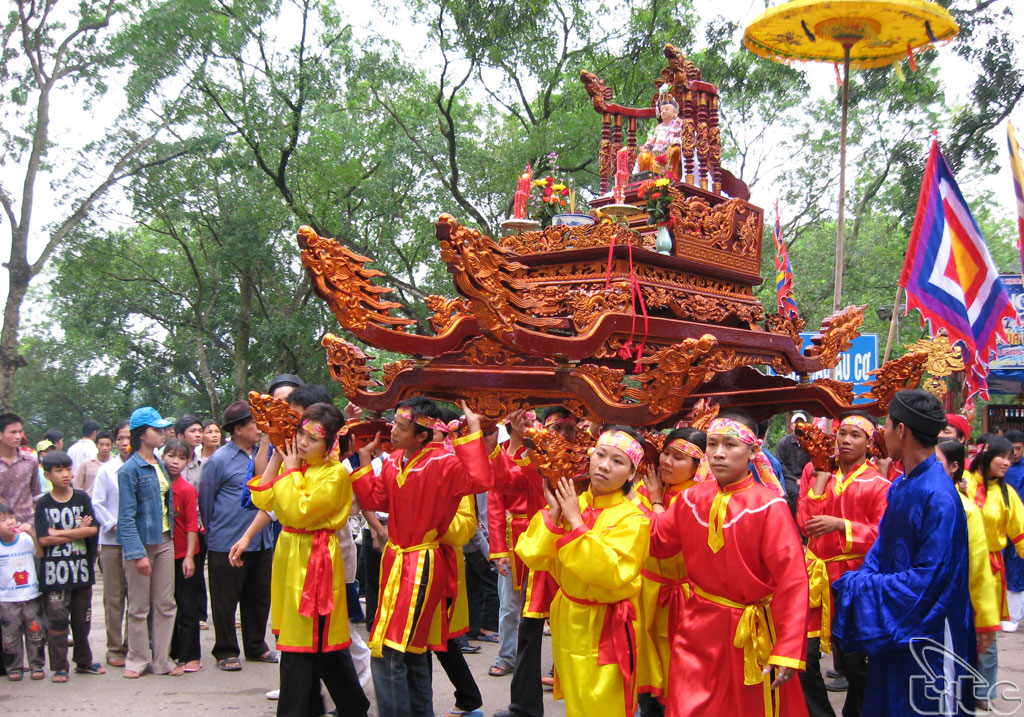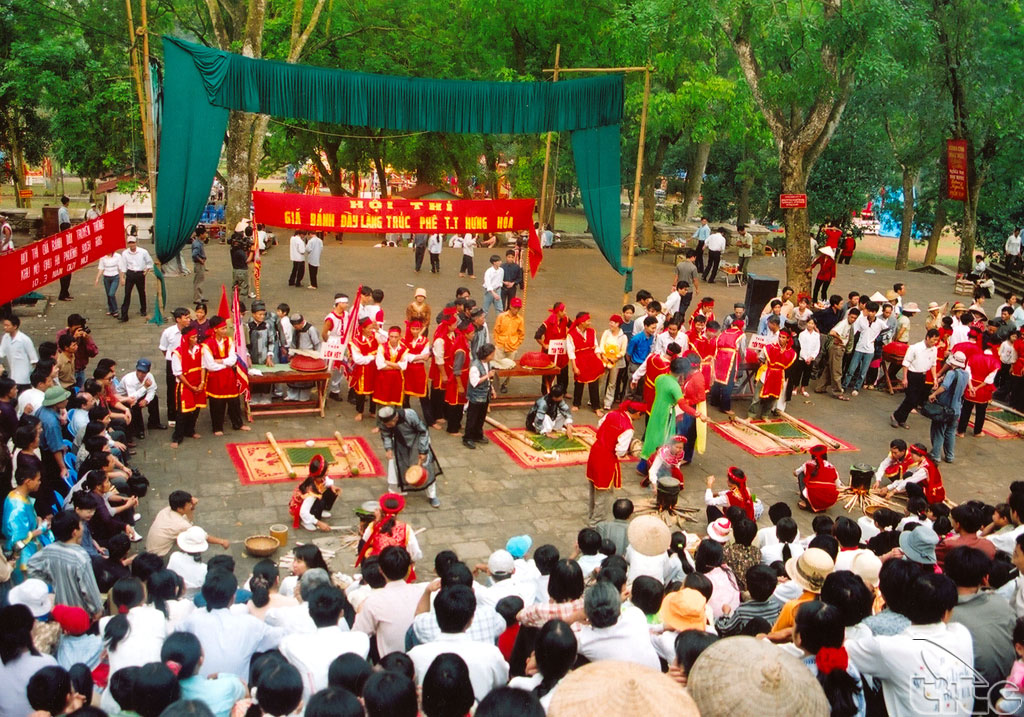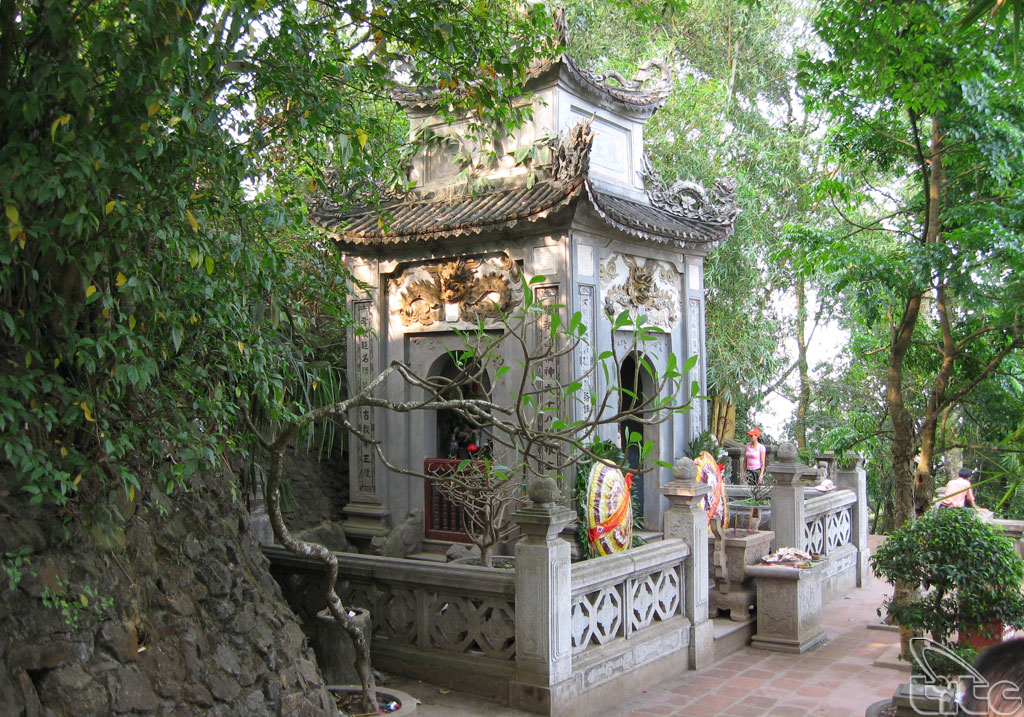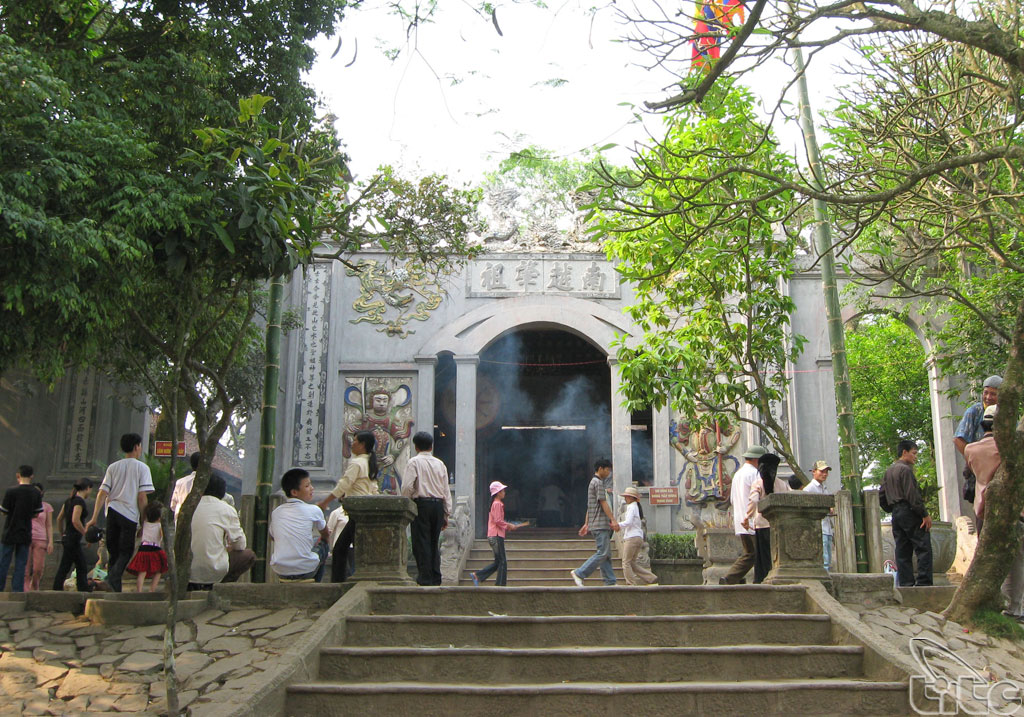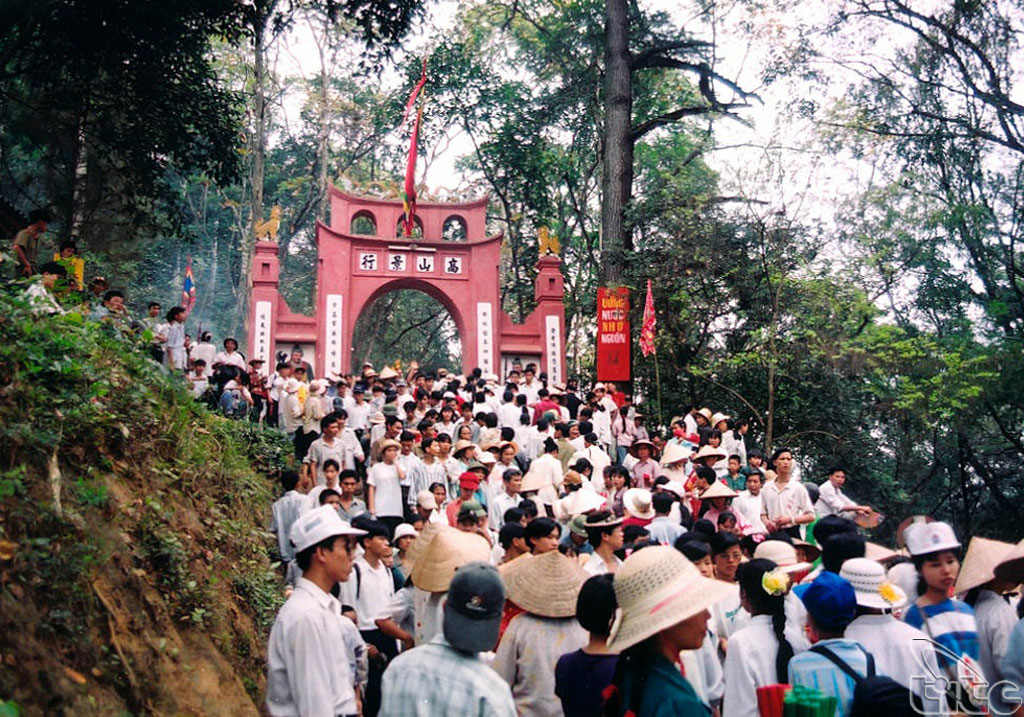(TITC) - The worship of Hung Kings
originates from Hung Kings dynasty in the belief that all Vietnamese
people have the same origin Dragons children and Fairys
grand-children; and also expresses Vietnamese philosophy When drinking
water, remember the source and the spirit of great national unity.
According to legend, Lac Long Quan son of Kinh Duong Vuong Loc Tuc
got married with Au Co daughter of King De Lai and gave birth to 100
sons. After that, 50 sons followed Au Co and 50 others followed Lac Long
Quan to settle. The first son followed his mother to arrived in Phong
Chau Land (now Phu Tho Province) and established Van Lang Nation and
became King Hung. Van Lang was the first nation in Vietnamese history
and ruled by 18 kings. Hung Kings taught local people to grow rice and
selected Nghia Linh Mountain, the highest mountain in the region to
perform the religious rituals of the agricultural population as worship
of rice god and sun god for the good weather, good crops. To remember
the great merit of Hung Kings, the people set up the temple (Hung Kings
Temple Relic Site) at the center of Nghia Linh Mountain and chose the
10th day of the third lunar month as Ancestral Anniversary day. From
this first temple, the worship of Hung Kings has gradually spread and
reaches a national level, and now it is practiced at temples in
Northern, Central and Southern and also by Vietnamese overseas.
According to historical documents, the worship of Hung Kings has
strongly developed for a long time before officially honored in Le
Dynasty (1428 1788). It was acknowledged by the imperial dynasties of
the Le (14281788), Tay Son (17781802), and Nguyen (18021945) by means
of codified legends, royal conferment, and provision of lands to
support the worship. Today the Government allocates a substantial budget
to safeguard, restore and maintain the spaces of the worship of Hung
Kings, especially at Hung Kings Temple Relic Site, and supports the
efforts of local people with a role in the Hung Kings Ancestral
Anniversary, publishing items (books and DVDs) on legends, rituals and
the folk arts related to the worship to serve communities. There are
also initiatives to include Hung Kings legend materials in the school
curriculum in order transmit the tradition to future generations. The
Government also approved a public holiday on the 10th day of the third
lunar month so that people nationwide participate and organize
sacrificial activities. The total number of Hung Kings temples
nationwide is 1,417.
The worship of Hung Kings has diversified forms, typically Hung Kings
are jointly worshiped with many other characters as princesses Tien
Dung, Ngoc Hoa; Saint Tan Vien; Trung Trac and Trung Nhi
in the temples
in Phu Tho Province. The joint worship forms with Long Hai Dai Vuong,
Phu Dong Thien Vuong, Mai An Tiem, Chu Dong Tu
also develop in Ha Noi,
Thai Binh, Hai Duong, Thanh Hoa
In many localities, Hung Kings are also
joint-worshiped at familys altar.
Every year, on the 10th day of the third lunar month, Ancestral
Anniversary day is held at Hung Kings temples nationwide, of which
biggest one takes place in Hung Kings Temple Relic Site. In Phu Tho
Province, each village selects a Festival Organizing Board (Ban Khanh
Tiet) of 6-9 mature, knowledgeable individuals of good conducts who lead
and manage the rituals. The Board appoints suitably expert temple
guardians to tend worship sites, instruct devotees and offer incense to
Hung Kings year round. In addition, villages also select strictly Ritual
Committee and knowledgeable elders.
On major Hung Kings festival days, communities make offerings of
rice-based delicacies such as square cakes (banh chung) and glutinous
cakes (banh giay). People engage in verbal and folk arts and
performances including reading of supplication petitions, praying,
bronze drum beating and Xoan singing.
With unique and
distinct values, on 6 December 2012, in Paris (France), UNESCO officially
recognized the worship of Hung Kings in Phu Tho Province as Intangible Cultural
Heritage of Humanity. This is the first belief in Viet Nam recognized as world
heritage. The recognized-space includes
109 villages in Phu Tho Town, Viet Tri City and districts of Cam Khe, Doan
Hung, Ha Hoa, Lam Thao, Phu Ninh, Tam Nong, Thanh Ba, Thanh Son, Thanh Thuy and
Yen Lap (Phu Tho Province).
Thu Giang
ATTRACTIONS
- National Father Lac Long Quan Temple
- National Mother Au Co Temple
- Hung Kings Temple
- Hung Vuong Museum
